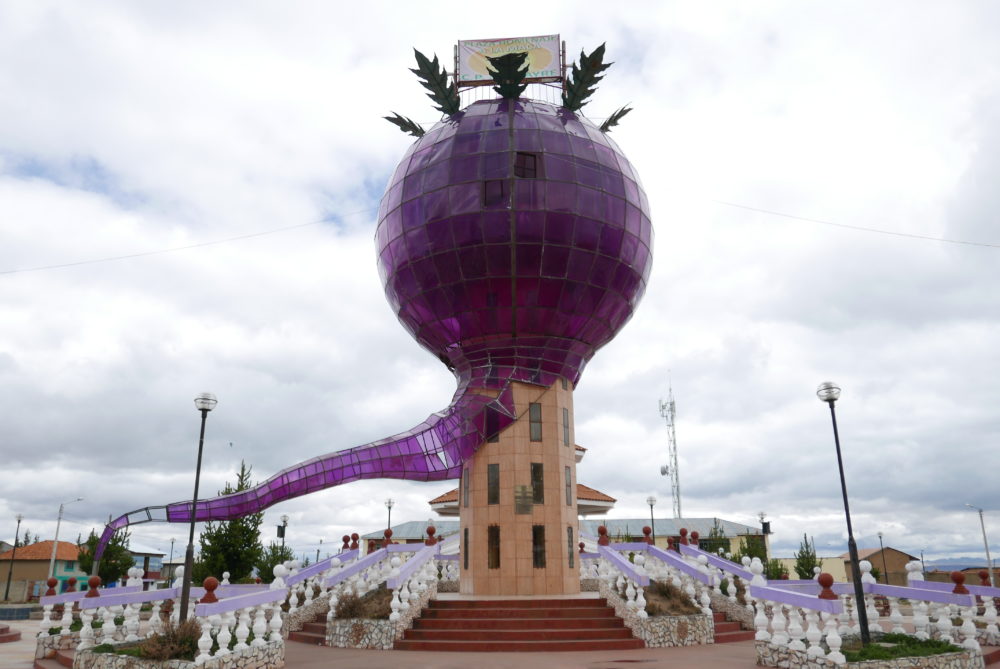by JACK LAU LO

On the Bombón plateau in the midst of the Andes mountain range, you feel as if you’re inside a giant freezer. But if you’re careless, the midday sun will cook your skin.
Peru has designated this area the Junín National Reserve. Its eponymous lake, also called Chinchaycocha in Quechua, has been here since the Incas. It supplies water to the capital Lima.
From these arid, harsh lands came a superfood with such promise that it attracted the world’s attention: the fertile maca (Lepidium meyenii). The root was the subject of an economic boom but then vanished because genetic material was unlawfully taken out of the country, an act scientists call ‘biopiracy’.
Root of the problem
It is 7am and the streets are empty in the town of Huayre, Junín district, which is 4,113 metres above sea level. The thermometer reads -2C. Nothing warms your hands. The town square boasts an extravagant purple glass monument honouring the maca. It looks as if it could be the spermatozoid of a psychedelic dinosaur.
Huayre is home to just 1,200 people, according to the Peruvian National Institute of Statistics and Informatics. Junín’s residents say this corner of the Andes gave birth to maca, which six years ago experienced a fleeting bonanza that sparked delirium.
“They all went mad. And how could they not?” says Teo Quispe, a local driver, who briefly tried his hand at maca farming. “I had never ventured into agriculture before, but I was also encouraged.”
From the time of the Incas, many lauded maca’s supposed benefits – from increasing fertility to fighting insomnia. Little by little, however, it was forgotten and in the 1980s was declared an endangered species.
According to Iván Manrique, a researcher at Peru’s world-renowned International Potato Centre (CIP in the Spanish acronym), at that time there were scarcely 50 hectares of planted area, just enough to supply farmers and ranchers on the Bombón plateau.
In the late 1990s, Peru again promoted consumption, not only domestically, but also in Asia. Then-President Alberto Fujimori sold Japan on the idea that maca was a kind of ancient Andean Viagra capable of combating impotence. It was the beginning of a disinformation campaign, the effects of which survive twenty years on.
In 2004, the Government of Peru declared maca, known elsewhere as Peruvian ginseng or Peruvian ginger, the country’s flagship product. However, the state’s investment in research was not commensurate with the vision.
Toward Freedom for more
